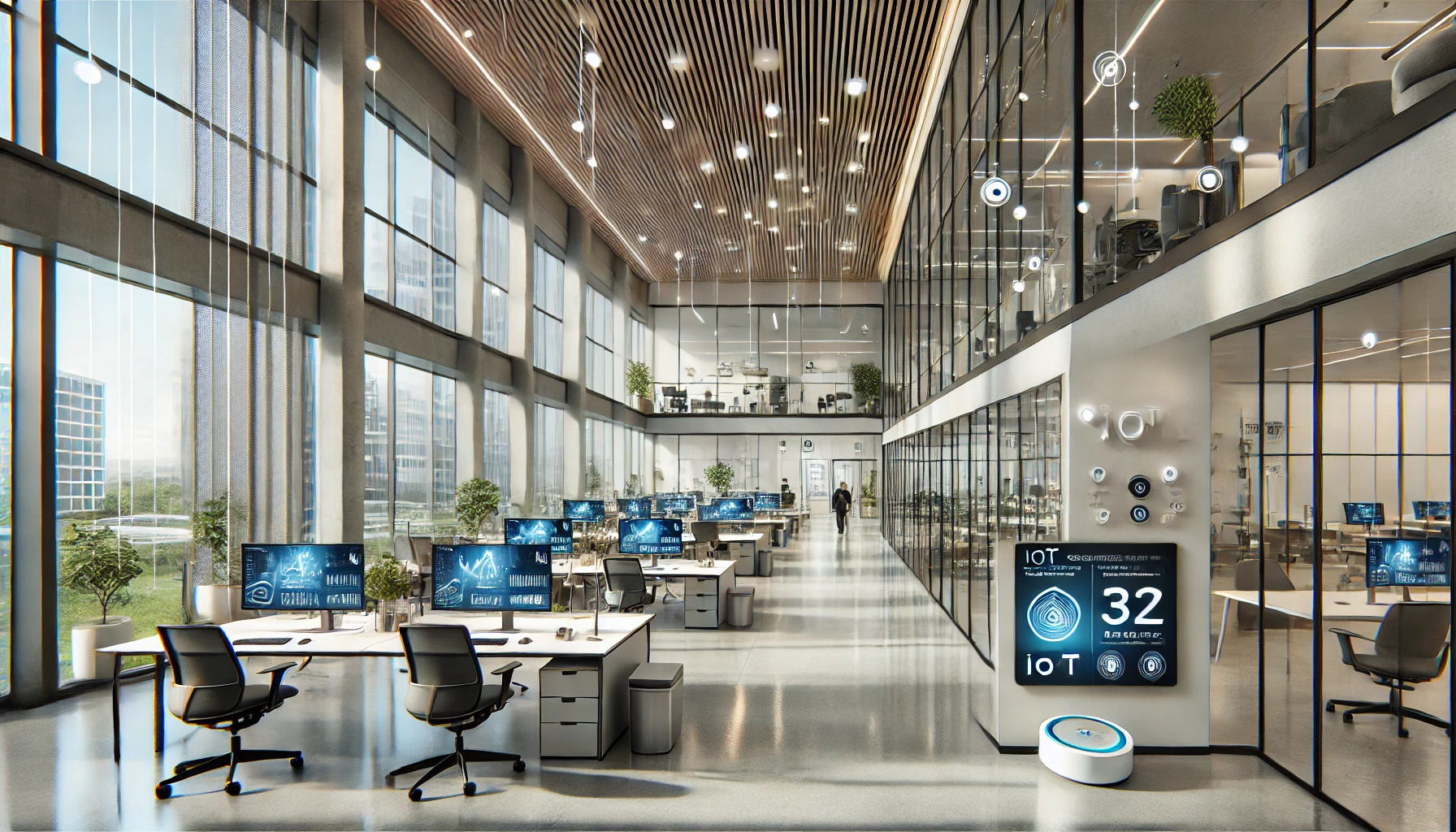In an era where technology continuously redefines the boundaries of possibility, the integration of next-generation sensors and Internet of Things (IoT) devices into building automation systems is transforming how we manage and experience indoor environments. As buildings become more intelligent, these technologies are enhancing user control, optimizing space usage, and significantly improving energy efficiency. This shift not only benefits building operators and occupants but also aligns with global sustainability goals, making the adoption of Building Internet of Things (BIoT) strategies a compelling choice for forward-thinking organizations.
The Evolution of Sensors and IoT in Building Automation
Building automation has come a long way from simple thermostats and lighting timers. Today’s smart buildings are equipped with a network of sensors and IoT devices that work together to monitor, control, and optimize building operations in real time. These technologies offer unprecedented levels of insight and control, transforming static structures into dynamic environments that adapt to the needs of their occupants.
Next-Gen Sensors are the unsung heroes of this transformation. These devices, often small and unobtrusive, collect data on various environmental parameters such as temperature, humidity, light levels, air quality, and occupancy. Modern sensors are more accurate, reliable, and energy-efficient than their predecessors, with many capable of wirelessly transmitting data over long distances.
Meanwhile, IoT devices serve as the connective tissue, enabling different systems within a building to communicate and work together. IoT devices can range from smart thermostats and lighting controls to advanced HVAC systems and security cameras. When integrated into a cohesive system, they allow building managers to monitor and control all aspects of the building’s performance from a single interface, whether on-site or remotely.

Enhancing User Control Over Environmental Conditions
One of the most immediate benefits of integrating next-gen sensors and IoT in building automation is the enhanced level of control it offers users over their environment. In the past, environmental controls in buildings were often centralized, with little flexibility to adjust conditions based on individual preferences or real-time changes in occupancy.
Today, IoT-enabled BMS can deliver a highly personalized experience. Occupants can use their smartphones or dedicated control panels to adjust the temperature, lighting, and ventilation in their immediate surroundings. This level of customization improves comfort and productivity, as users can tailor their environment to their specific needs.
Furthermore, these systems can learn from user behavior over time, using machine learning algorithms to anticipate preferences and adjust settings automatically. For instance, if a conference room is typically booked for meetings at 9 AM, the system can preemptively adjust the temperature and lighting to optimal levels before occupants arrive, enhancing both comfort and energy efficiency.
Optimizing Space Usage with IoT
In addition to improving user control, the integration of sensors and IoT devices offers powerful tools for optimizing space usage within a building. In commercial settings, where real estate costs are significant, maximizing the utility of available space is crucial.
Occupancy sensors, combined with IoT analytics platforms, provide real-time data on how spaces are being used. For example, sensors can detect when a meeting room is occupied, how many people are present, and how long they stay. This data can be analyzed to identify underutilized areas, enabling building managers to reconfigure spaces to better meet the needs of occupants.
Moreover, IoT systems can integrate with scheduling and reservation systems to automatically allocate resources based on demand. If certain rooms or areas are consistently underutilized, the system can suggest repurposing them for other activities or even adjusting the building layout to improve flow and efficiency.
This level of insight also supports more flexible workplace models, such as hot-desking and activity-based working, where employees do not have assigned desks but instead choose workspaces based on the tasks they need to complete. By understanding usage patterns, organizations can design spaces that better support these new ways of working, ultimately enhancing employee satisfaction and productivity.

Contributing to Energy Efficiency
Perhaps the most significant impact of integrating next-gen sensors and IoT into building automation is the potential for energy efficiency. Buildings are among the largest consumers of energy worldwide, accounting for about 40% of total global energy usage. Reducing this consumption is not only a cost-saving measure but also a critical component of efforts to mitigate climate change.
Sensors play a crucial role in monitoring real-time energy usage, detecting inefficiencies, and identifying opportunities for savings. For instance, occupancy sensors can ensure that lights and HVAC systems are only active when a space is in use, automatically turning them off when the space is vacant. This simple adjustment can lead to substantial energy savings over time.
IoT devices can also enable more sophisticated energy management strategies, such as demand response. By connecting to the grid, a building can automatically reduce its energy usage during peak demand periods, helping to balance the load and prevent blackouts while also reducing energy costs.
Moreover, IoT systems can integrate with renewable energy sources, such as solar panels or wind turbines, optimizing their usage based on weather conditions and energy demand. This integration supports the broader adoption of renewable energy, further reducing the building’s carbon footprint and contributing to global sustainability goals.
Aligning with Global Sustainability Goals
The integration of next-gen sensors and IoT in building automation is not just about improving comfort and efficiency—it is also about aligning with the global push toward sustainability. With the United Nations’ Sustainable Development Goals (SDGs) and the Paris Agreement’s targets for reducing carbon emissions, there is increasing pressure on organizations to adopt greener practices.
BIoT strategies are a powerful tool in this effort. By enabling real-time monitoring and control of energy usage, water consumption, and waste management, IoT systems help buildings operate more sustainably. They provide the data needed to make informed decisions about resource usage and identify areas for improvement, whether it’s reducing energy consumption during off-peak hours or optimizing water usage in landscaping.
Additionally, BIoT systems can help organizations meet regulatory requirements and achieve certifications such as LEED (Leadership in Energy and Environmental Design) or BREEAM (Building Research Establishment Environmental Assessment Method). These certifications not only demonstrate a commitment to sustainability but can also enhance the market value of a building.
The Benefits of Adopting BIoT Strategies
For organizations considering the adoption of BIoT strategies, the benefits are clear:
- Enhanced Operational Efficiency: By integrating sensors and IoT devices, buildings can operate more efficiently, reducing energy and resource consumption while improving comfort and functionality.
- Improved Occupant Experience: With greater control over their environment and more responsive building systems, occupants enjoy a more comfortable, productive, and personalized experience.
- Cost Savings: Energy efficiency and optimized space usage translate directly into cost savings, with lower utility bills and more efficient use of real estate.
- Sustainability and Compliance: BIoT strategies support sustainability goals and help organizations meet regulatory requirements, contributing to a greener planet and enhancing corporate social responsibility efforts.
- Future-Proofing: As technology continues to evolve, buildings equipped with IoT systems are better positioned to adapt to new innovations, ensuring they remain at the cutting edge of building performance.
Conclusion
The integration of next-gen sensors and IoT into building automation is more than just a technological upgrade—it’s a fundamental shift in how we manage and experience our built environments. By enhancing control, optimizing space usage, and driving energy efficiency, these technologies offer a pathway to smarter, more sustainable buildings. As global sustainability goals become increasingly important, adopting BIoT strategies is not just a smart move; it’s an essential one for organizations committed to leading in the modern era. With the right approach, the buildings of tomorrow will not only meet the needs of their occupants but also contribute to a healthier planet for future generations.

